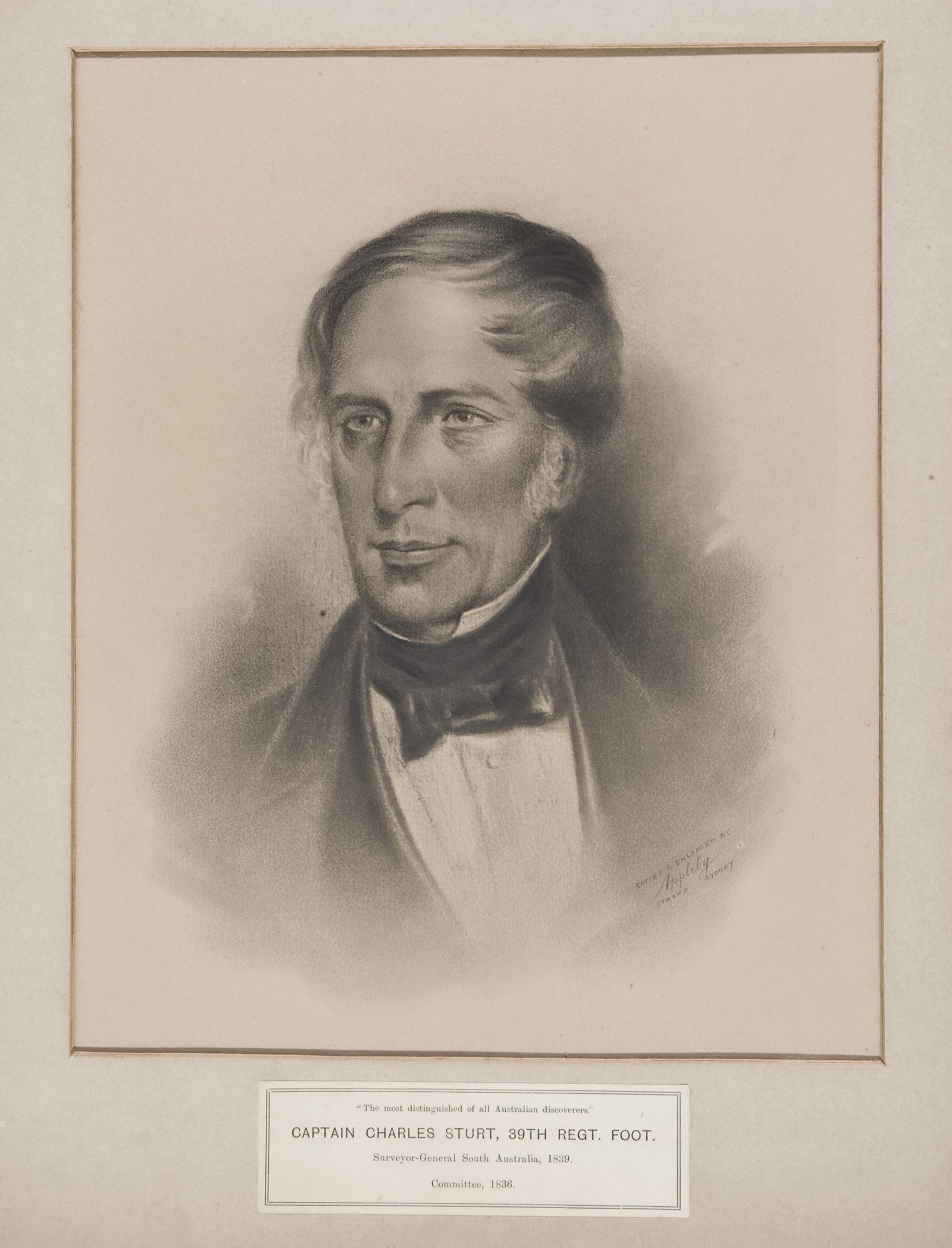Charles Sturt
On this page...
Readers note: This is an excerpt from the Trailblazers: Australia’s 50 Greatest Explorers exhibition, developed in 2015. This content was written as a brief biography on why this person was included in the exhibition.
Driven by the dream of an inland sea, Charles Sturt traced the courses of the Macquarie, Bogan and Castlereagh rivers, then discovered the Darling River and followed the Murray to Lake Alexandrina on the South Australian coast. In charting the drainage of the country’s greatest river system, he found huge tracts of arable land. Respected and liked by the men under him, Sturt prided himself on his treatment of Aboriginal people, not one of whom was harmed in his explorations, despite many threats of attack.
Born in India on 28 April 1795, the son of a Bengal judge, Sturt was educated in England and joined the army in 1813. He sailed to Sydney in 1826 in a regiment in charge of convicts.
On arriving, Sturt was taken with the gossip about a possible inland sea, and conducted an expedition in the searing summer of 1828–29 to trace the course of the Macquarie River. This expedition encountered ‘a noble river’ that Sturt named the Darling.

Charles Sturt was a Member of Museum and an inland sea explorer.
Image: unknown© Australian Museum
The following summer he led an expedition that followed the Murrumbidgee River to its junction with the Murray, then followed the Murray to the sea on the South Australian coast. With failing health, little food and an exhausted crew, and having failed to find an inland sea, Sturt turned the whaleboat around and rowed 1448 kilometres upstream.
The idea of an inland sea still haunted him though, and more than a decade later, in August 1844, Sturt left Adelaide with 15 men (including John McDouall Stuart), six drays, a boat and 200 sheep and travelled into the harsh South Australian inland. By midsummer, all water had dried up and the party had become trapped in inhospitable country between the Barrier and Grey ranges. Sturt’s second-in-command, James Poole, died of scurvy.
Heavy rain finally let the group move on, and Sturt travelled north-westerly, making a series of forays culminating in a 725-kilometre journey into the Sturt Stony Desert and the dunes of the Simpson Desert, where he at last reluctantly abandoned the hope of finding an inland sea.
As well as the Sturt River in Adelaide, and Charles Sturt University, Sturt’s name has been given to the splendid floral emblem of South Australia that abounds over much of the country he explored on his inland expedition, Sturt’s Desert Pea.
Subscribe to our eNewsletter
Keep up to date on events, special offers and scientific discoveries with our What's On eNewsletter. Receive the latest news on school holiday programs and much more!
Sign up now

